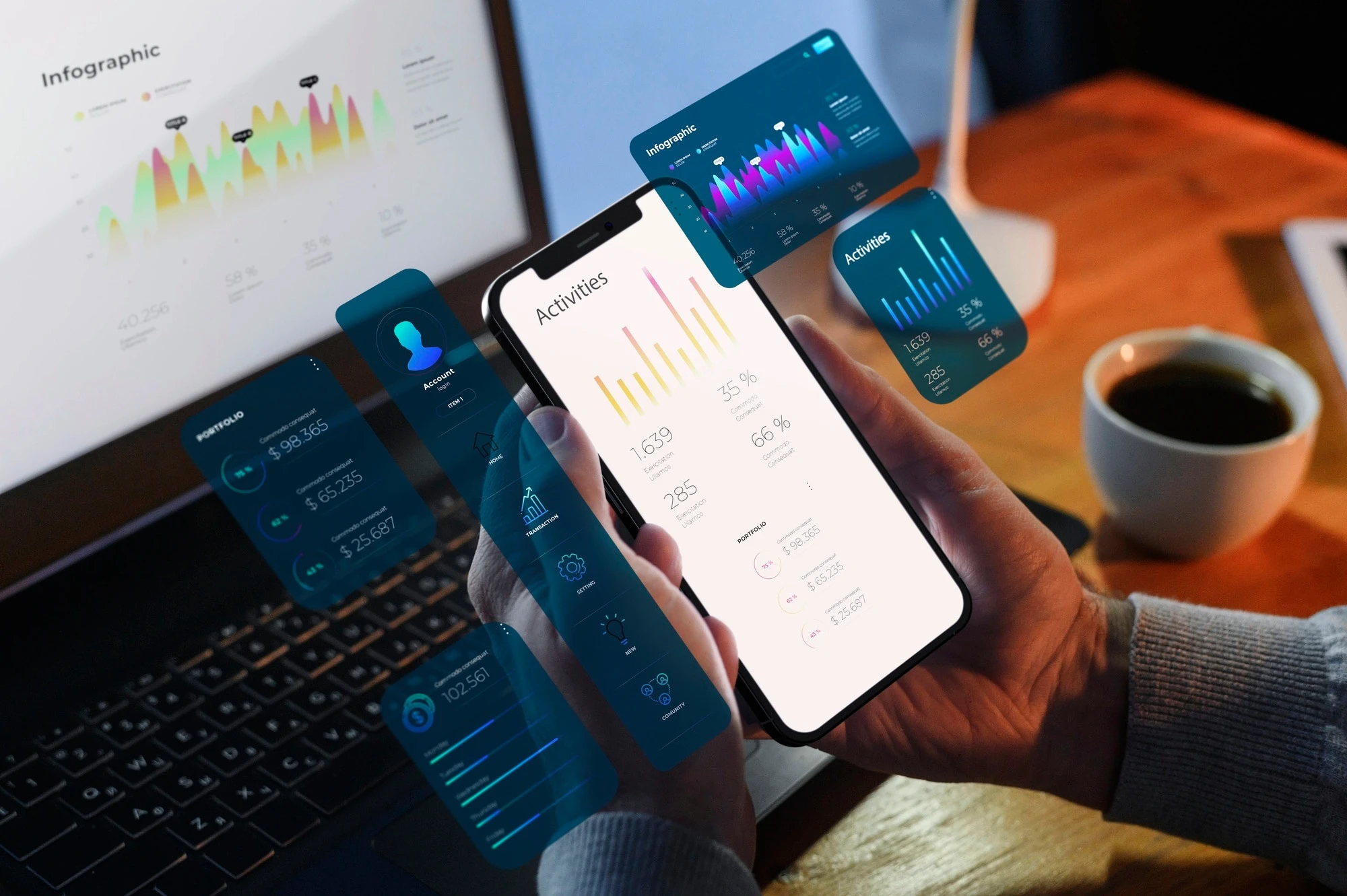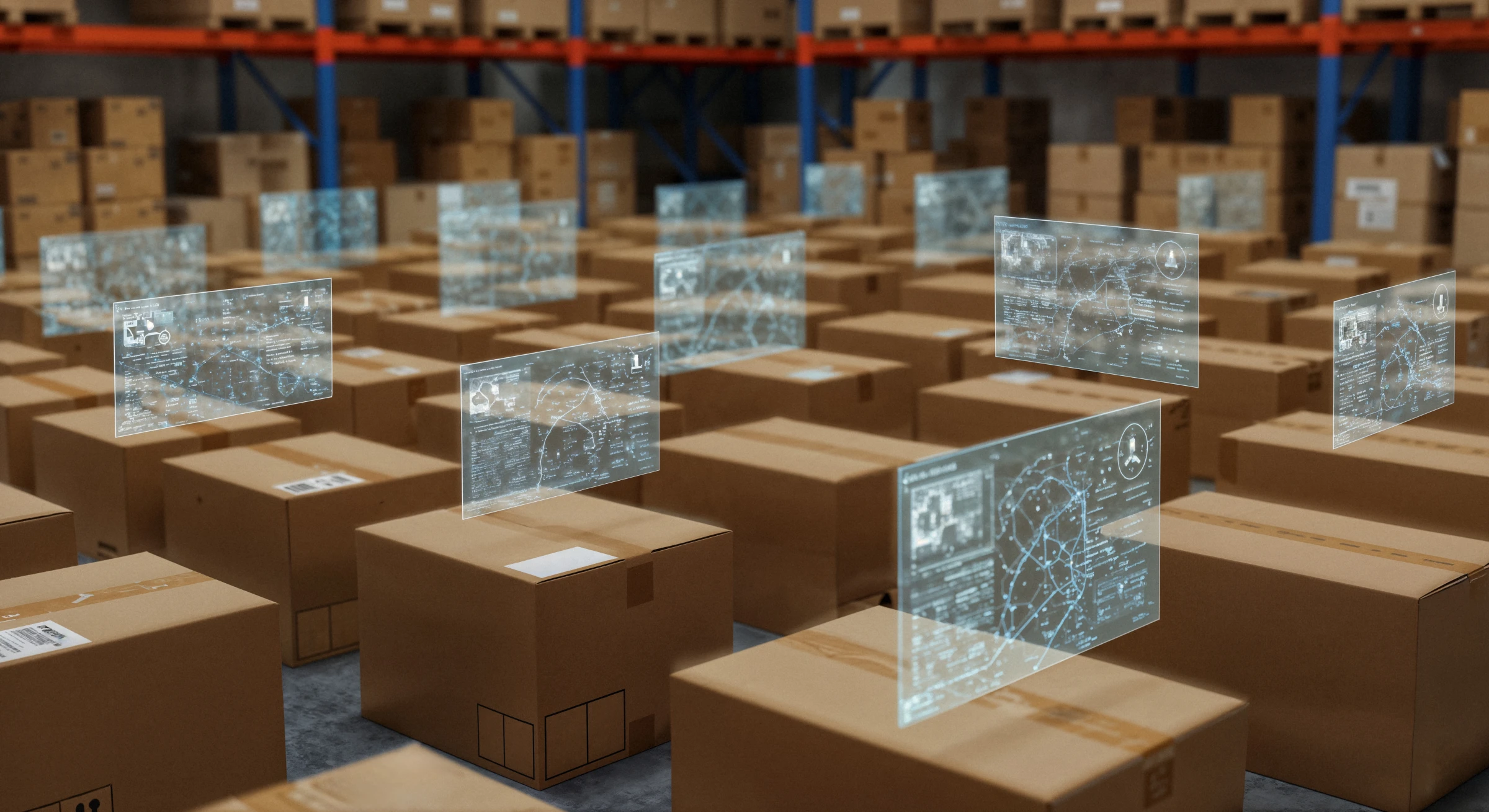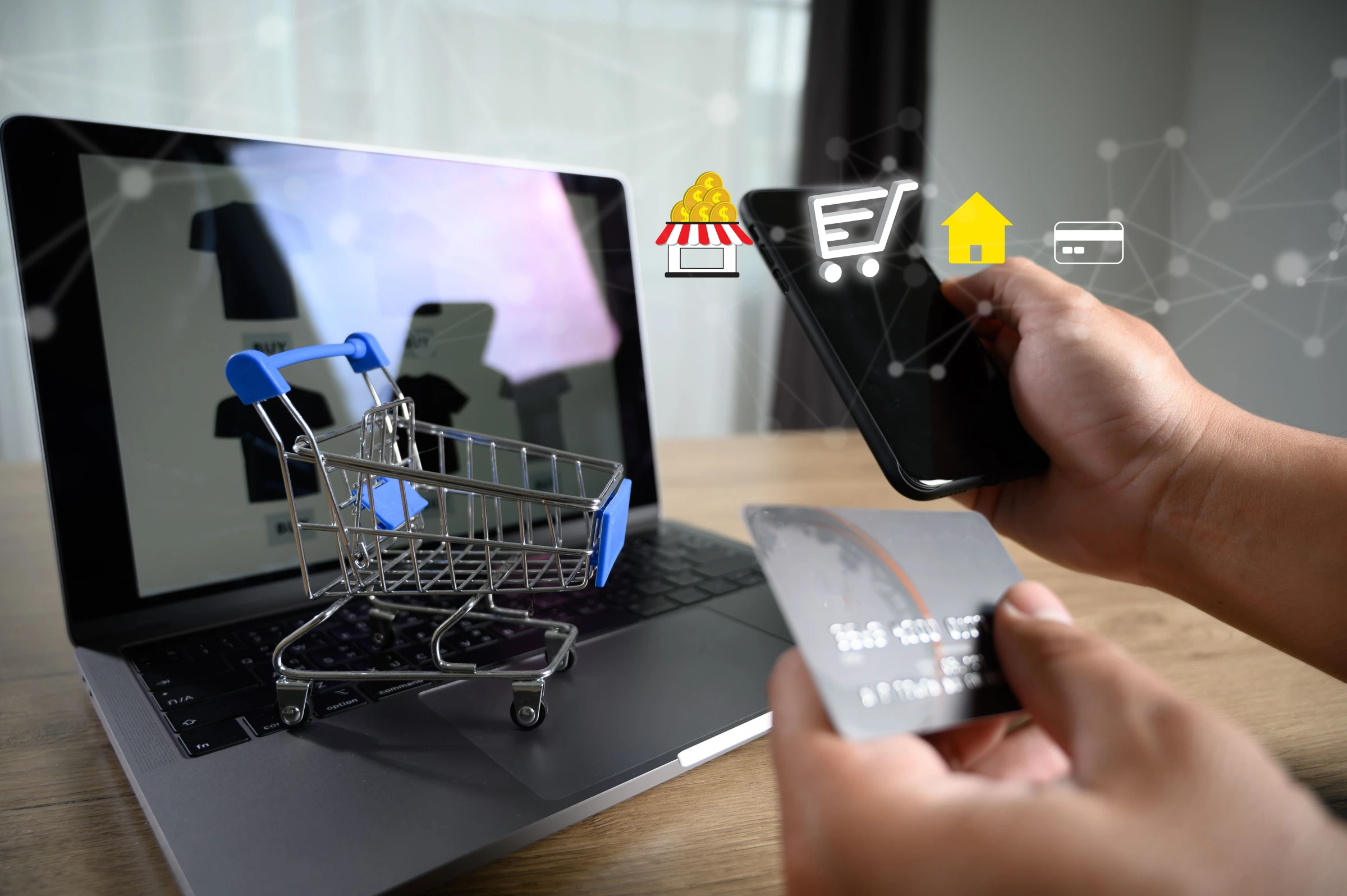Explore Insights And Updates From Our Industry

Web Apps: Faster Deployment & Cross-Platform Access
A web
application is accessed through internet browsers like Chrome, Safari, or Edge,
and is built using modern front-end frameworks such as React, Angular, or
Vue.js. Web apps are inherently cross-platform, meaning they work seamlessly
across desktops, tablets, and smartphones without requiring users to download
anything.
Advantages of Web Apps
Faster
Time-to-Market
Web apps can be
launched more quickly because they rely on a single codebase and require no app
store approvals. This makes them ideal for MVPs (Minimum Viable Products) or
pilot launches.
Cost-Effective
Development
By building once for all platforms, businesses can reduce both initial
development and ongoing maintenance costs. This unified approach also allows
smaller teams to support multiple platforms with fewer resources.
Instant
Updates
Unlike mobile apps, where updates depend on users downloading the latest
version, web apps can be updated server-side. This ensures all users always
access the most recent version.
SEO
Visibility
Web apps can be indexed by search engines, allowing them to rank organically
and drive traffic. This is especially beneficial for content-rich platforms,
SaaS tools, and ecommerce sites.
Broader
Accessibility
No installation barriers mean users can access the app instantly via a link.
This convenience enhances adoption, particularly for users who hesitate to
download apps for one-time use.
Best Use Cases for Web Apps
· Business dashboards and internal tools
· SaaS platforms and content management systems
· E-learning portals
· Corporate websites and portals
·
Early-stage MVPs requiring fast feedback
Mobile App: Native Performance & User-Centric Features
Mobile
applications are downloaded from app stores like the Apple App Store or Google
Play Store. They are built using native languages (Swift, Kotlin) or
cross-platform frameworks like Flutter or React Native. In 2025, mobile apps
remain essential for delivering deeply immersive, device-integrated
experiences.
Advantages of Mobile Apps
Superior Performance Native apps leverage device-level capabilities, resulting in faster performance, smoother animations, and more responsive interactions.
Offline Access Mobile apps can function without internet, allowing users to interact with key features even when offline—essential for travel, health, or productivity apps.
Enhanced User Engagement Features like push notifications, in-app messages, and biometric login help brands drive higher retention and engagement.
Stronger Monetization Opportunities App stores provide a direct channel for monetization through subscriptions, in-app purchases, or premium downloads, giving mobile apps a distinct commercial edge.
Deeper
Personalization
Access to location data, motion sensors, and usage patterns allows for
AI-driven personalization, which improves user experience and increases
conversion rates.
Best Use Cases for Mobile Apps
· On-demand services (e.g., food delivery, ride-sharing)
· Retail and ecommerce platforms with loyalty features
· Fitness and wellness trackers
· Finance and health apps requiring secure logins
·
Brands seeking daily engagement and push notifications
Web App vs Mobile App in 2025: Decision-Making Factors
Choosing the right platform depends on a few core factors:
1. Business Goals
Are you looking for quick validation and market feedback? → Web App
Are you
aiming for daily engagement and app store exposure? → Mobile App
2. Target Audience
Will your users primarily access your app from desktops or browsers? → Web App
Are your
users mobile first and expect on-the-go access? → Mobile App
3. Features & Functional Requirements
Do you need device-level access (e.g., camera, GPS, Bluetooth)? → Mobile App
Are your
core features form-based or content-driven? → Web App
4. Budget & Timeline
Need to keep development lean and fast? → Web App
Ready to
invest in premium user experience? → Mobile App
Hybrid & Progressive Web Apps: A Middle Ground
In 2025, you don’t always have to choose just one.
Progressive Web Apps (PWAs) blend the best of both worlds. They are web-based but feel like mobile apps, offering offline access, push notifications, and home screen installability. PWAs are great for businesses that want to start web-first but gradually build toward mobile-like functionality.
Similarly,
hybrid app development using frameworks like Ionic or Flutter allows for a
single codebase to serve both web and mobile needs with some limitations in
native performance.
What Launchpad101 Recommends
At Launchpad101, we don’t believe in one-size-fits-all. We take the time to understand your:
· Target market and user personas
· Product goals and growth plans
· Technical architecture and integration needs
From there,
we recommend a roadmap—whether that’s building a web app to validate quickly
and scale later or going mobile-first for high retention and user engagement.
In some cases, a phased approach works best: start with a web app, then launch
a mobile version as user demand grows.
Conclusion
There’s no universal answer to the web app vs mobile app question. The right choice in 2025 depends on your business objectives, customer behavior, and development resources.
If speed, accessibility, and SEO matter most—start with a web app. If engagement, personalization, and mobile-first usage are key—go mobile first. And if you're still unsure, hybrid solutions like PWAs might offer the best of both.
Need help choosing the right path? Let’s talk. At Launchpad101, we design and build digital products that deliver performance, usability, and growth.

Top 5 Digital Transformation Trends for SMBs in 2025
In 2025, digital transformation is no longer a buzzword, it’s a business imperative, especially for small and medium-sized businesses (SMBs) that want to remain competitive, resilient, and connected in a fast-paced digital world.
Unlike previous years where innovation seemed optional, today’s market reality demands that SMBs adopt tools that streamline operations, improve customer engagement, and support remote and flexible work models. With the rise of scalable cloud solutions, affordable AI tools, and automation platforms, the digital playing field is leveling, and SMBs are stepping up.
Here are the top 5 digital transformation trends that are reshaping how SMBs work smarter, serve better, and grow faster in 2025.
1. AI Goes from Optional to Everyday
Artificial Intelligence (AI) is no longer reserved for Fortune 500 companies with large R&D budgets. In 2025, affordable AI-powered tools are accessible to businesses of all sizes, and SMBs are leading the charge in adopting them.
How SMBs are using AI today:
• Smart customer support: AI chatbots handle FAQs, order tracking, and appointment scheduling with human-like accuracy.
• Automated email marketing: AI helps segment audiences, optimize send times, and personalize subject lines to boost open rates.
• Sales forecasting: Predictive analytics help sales teams identify high value leads, forecast revenue, and prioritize outreach.
• AI-generated content: Tools like ChatGPT and Jasper help teams create social posts, product descriptions, and blog drafts faster.
By automating repetitive tasks and analyzing data in real time, AI allows small teams to do more with less and focus their energy on strategic initiatives.
2. Cloud-Based Tools Become the New Standard
Cloud technology has evolved from a competitive advantage to a core business enabler. In 2025, SMBs are widely moving their operations to the cloud for better scalability, security, and flexibility.
Key advantages of cloud adoption for SMBs:
• Remote collaboration: Tools like Google Workspace, Microsoft 365, and Slack allow teams to work together from anywhere.
• Centralized data: Storing files and databases in the cloud ensures everyone has access to the latest version of information.
• Improved security: Cloud providers offer enterprise-grade security features, something most small businesses can’t afford in-house.
• Scalability: Businesses can start small and scale their storage, computing power, or features as they grow.
For many SMBs, migrating to the cloud also reduces overhead by eliminating the need for physical servers or on-site IT infrastructure. It’s a leaner, more agile way to operate.
3. Smarter Automation for Daily Workflows
Time is one of the most valuable resources for small teams. That’s why SMBs are increasingly investing in automation platforms to streamline their repetitive and time-consuming tasks.
Common use cases for automation in SMBs:
• Finance: Automatically generate invoices, send payment reminders, and reconcile expenses.
• Customer service: Use helpdesk software to auto-tag tickets, assign agents, and send satisfaction surveys.
• Logistics: Trigger inventory updates and shipment tracking messages based on order status.
• HR and onboarding: Automate employee onboarding emails, document collection, and training reminders.
Platforms like Zapier, Make (formerly Integromat), and HubSpot Workflows empower non-technical teams to create smart automations without writing a single line of code.
The result? Fewer errors, faster operations, and greater productivity, all while keeping the team lean and efficient.
4. Turning Data into Direction
As SMBs adopt more digital tools, they’re generating more data than ever before—but data is only useful if it’s actionable.
In 2025, SMBs are increasingly using data analytics platforms to gain insights that inform smarter decisions, improve customer experiences, and optimize business operations.
What SMBs are doing with data:
• Customer analytics: Understand which channels bring in the most leads and which products drive repeat purchases.
• Marketing optimization: Analyze campaign performance to refine targeting, messaging, and budget allocation.
• Operational efficiency: Track service delivery timelines, order accuracy, and response times to spot bottlenecks.
• Employee productivity: Use dashboards to understand workload distribution, task completion rates, and team efficiency.
Tools like Google Analytics, Tableau, Power BI, and Looker Studio are now user-friendly and cost-effective, allowing even non-technical teams to visualize and act on their data.
SMBs that embrace a data-first mindset make decisions with confidence and can pivot quickly in response to customer or market changes.
5. Customer Experience Gets a Digital Boost
In an increasingly crowded market, customer experience (CX) can be the deciding factor between a one-time buyer and a loyal customer. That’s why SMBs are prioritizing digital tools that help deliver seamless, consistent, and personalized customer interactions.
How SMBs are enhancing CX in 2025:
• Live chat and messaging: Real-time support through website chat, WhatsApp, or Instagram DMs keeps customers engaged.
• Self-service portals: Let customers track orders, update account info, or access documentation without waiting for support.
• Loyalty and referral programs: Gamify repeat purchases and reward customer advocacy with automated platforms.
• Personalized follow-ups: Use CRM systems to send timely, relevant emails after key interactions or purchases.
This investment in CX is not just about delight—it also reduces churn, increases lifetime value, and turns satisfied customers into brand advocates.
In 2025, a good product isn’t enough. The experience surrounding it must also be efficient, digital, and human-centric.
Final Thought: Smart Growth Starts with Smart Tools
For small and medium-sized businesses, digital transformation in 2025 is not about chasing every new technology, it’s about choosing the right tools for your business goals.
By adopting AI, cloud platforms, automation, data-driven insights, and customer-first digital solutions, SMBs can:
• Operate more efficiently
• Scale with fewer resources
• Build lasting customer relationships
• Competing with larger, more established brands
Digital transformation is no longer a trend—it’s the foundation for sustainable growth. And in today’s landscape, even the smallest business can make a big impact with the right tech stack.

2025 Guide to UI/UX Best Practices for More Conversions
The Complete 2025 Guide to UI/UX Best Practices for Higher Conversions
In 2025, great UI/UX design isn’t optional, it’s the engine behind higher conversions. Whether you’re a startup launching your first product, or an established business scaling online, your user interface and user experience are make-or-break factors. A seamless journey can double your conversions; a confusing one can drive users away within seconds.
At Launchpad
101, we believe that combining growth strategy, UI/UX design, and web
development is the key to building experiences that users trust and that drive
results.
1. Think Mobile-First
More than
60% of traffic today comes from mobile. Designing a mobile-first UX means
faster loading times, simple navigation, and easy-to-tap CTAs that guide the
user naturally. Mobile optimization also boosts your SEO rankings, driving
organic traffic while improving user experience.
2. Simplify the User Journey
User journey
optimization is all about removing friction. Smart navigation, minimal clicks,
clear headings, and well-placed CTAs help users find what they need quickly.
Whether you're leading users to a purchase or a sign-up, every interaction
should feel intuitive.
3. Use Micro Interactions to Keep Users Engaged
Micro
interactions, like animated buttons, progress bars or success messages, offer
instant feedback. They create a polished, engaging environment that keeps users
connected to the action, reducing bounce rates and encouraging conversions.
4. Prioritize Speed and Accessibility
Nobody waits
for slow sites. Page speed optimization improves both UX and SEO. In parallel,
ensuring an ADA-compliant, accessible design expands your reach to a broader
audience, boosting trust and conversion opportunities.
5. Personalize the Experience
With
AI-driven UX, personalization is expected. Whether it’s recommending products
or tailoring content, dynamic experiences based on user behavior lead to longer
sessions, more engagement, and better conversion rates.
Conclusion:
In 2025, UI/UX best practices are directly tied to business growth. By focusing on mobile-first design, simplifying journeys, speeding up experiences, and personalizing content, brands can create interfaces that drive real results.

ERP vs OMS vs WMS: What Your Business Really Needs
As your e-commerce business grows, so does the complexity of your operations. Managing inventory, processing orders, handling fulfillment, and tracking customer data can quickly become overwhelming without the right systems in place. That’s when terms like ERP, OMS, and WMS start entering the conversation.
But what do these systems actually do—and more importantly, which one does your business really need?
At Launchpad101, we work with brands across all stages of growth, helping them streamline operations through smart tech integrations. In this blog, we break down the difference between ERP, OMS, and WMS, and help you decide where to invest first.
Understanding the Acronyms
What Is an ERP?
ERP (Enterprise Resource Planning) is an all-in-one system designed to manage core business processes across departments. That includes finance, HR, procurement, inventory, and customer data. It acts as a central hub, bringing together data from across your business for better planning and decision-making.
Key Features:
- Financial management and accounting
- Inventory tracking
- Procurement and supplier management
- HR and payroll
- Customer relationship management
Best For: Medium to large businesses looking to unify their operations across departments, especially those with brick-and-mortar, wholesale, or global business models.
What Is an OMS?
OMS (Order Management System) is the engine that manages the entire order lifecycle; from the moment a customer clicks "Buy Now" to final delivery or return. It connects your sales channels (website, marketplace, POS) with inventory, payment, and shipping data.
Key Features:
- Multi-channel order capture
- Real-time inventory visibility
- Payment and fraud check integrations
- Order routing and fulfillment rules
- Returns and refunds processing
Best For: Brands scaling across multiple channels or regions, needing tight control over orders, inventory, and customer experience.
What Is a WMS?
WMS (Warehouse Management System) is focused specifically on optimizing your warehouse operations. It manages inventory location, picking and packing workflows, shipping preparation, and overall warehouse efficiency.
Key Features:
- Inventory location tracking (shelves, bins, zones)
- Barcode scanning for inbound and outbound items
- Picking, packing, and shipping automation
- Staff productivity tracking
- Integration with shipping carriers and OMS systems
Best For: E-commerce brands that operate their own warehouse or 3PL providers managing high order volumes.
Where Do These Systems Overlap?
While each system has a core function, their features often overlap:
- Both ERP and OMS manage inventory, but the ERP looks at it from a financial and supply chain point of view, while OMS focuses on availability and fulfillment.
- WMS and OMS both track orders and stock, but WMS handles physical movement inside the warehouse, while OMS deals with customer-facing orders.
- ERP and WMS might both track inventory, but the ERP does it at a broader, accounting level, not in terms of bin-level accuracy.
To make the most of these systems, they should integrate and “talk” to each other seamlessly.
So, What Does Your Business Really Need?
Here is how to choose the right system based on your size, setup, and goals.
1. You Are a Growing Online Brand with Fulfillment Pain Points
Start with an OMS. If you are selling across platforms (like Shopify, Amazon, Noon, or Instagram), managing returns, and dealing with stockouts or late deliveries, an OMS gives you real-time visibility and control over your orders.
2. You Have Your Own Warehouse and In-House Fulfillment
Invest in a WMS. A Warehouse Management System will bring structure, accuracy, and speed to your operations—critical as your order volume grows. You will be able to track where every product is stored, how long it takes to pick and pack, and reduce shipping errors.
3. You Are Managing a Complex Business with Multiple Departments
Implement an ERP. If you are dealing with supply chain, finance, HR, and procurement alongside e-commerce operations, an ERP gives you the visibility and data centralization needed to scale efficiently.
What Launchpad101 Recommends
At Launchpad101, we never take a one-size-fits-all approach. Every business has its own structure and priorities. That is why we start with a tech audit, identify gaps in your workflow, and recommend solutions that fit your current stage while supporting future growth.
In some cases, a solid OMS with light WMS features is enough to manage e-commerce efficiently. For others, integrating your store with a third-party ERP might unlock smoother accounting and reporting without the overhead of a full ERP deployment.
Our team specializes in:
- OMS integration and customization
- WMS setup for regional fulfillment hubs
- ERP selection and connection to your digital commerce stack
- Full system implementation and staff training
Final Thoughts
Choosing between ERP, OMS, and WMS is not just a tech decision—it’s a business decision. Each system solves a different set of problems, and choosing the right one depends on where your biggest challenges lie.
If you are not sure what to prioritize, let us help. At Launchpad101, we are not here to sell you software—we are here to build you a system that works.

SEO for E-Commerce: Tips to Drive Organic Growth
In a digital world where paid ads and influencer campaigns dominate, one powerful tool often gets overlooked: search engine optimization. For e-commerce businesses, SEO offers a long-term strategy to bring in high-quality traffic without depending on constant ad spend. Whether your store sells fashion, tech, home goods, or wellness products, appearing at the top of Google search results can drive ongoing visibility and revenue.
At Launchpad101, we work with ambitious e-commerce brands that want to grow smarter. In this article, we break down what makes SEO so essential, and how to use it effectively to grow your online store.
Why SEO Still Matters in E-Commerce
When someone searches for a specific product or solution, the results on the first page of Google will often determine their purchase decision. If your brand is not showing up, you are missing out on customers who are already looking for what you offer.
SEO helps your store appear in those high-intent searches. It brings in traffic from customers who are actively searching, not just scrolling through social media. Unlike ads, which disappear when the budget runs out, SEO content works for you long after it is published.
A strong SEO strategy improves your store’s visibility, increases trust, and builds a foundation for growth that does not rely solely on marketing spend. Most importantly, it creates a better shopping experience for your customers through faster loading pages, more relevant content, and easier navigation.
Start with Keyword Research
The first step in any SEO strategy is understanding what your customers are typing into search engines. This is called keyword research. Tools like Google Keyword Planner, SEMrush, or Ubersuggest can help identify what people are searching for in your niche.
For example, if you sell skincare, you might find that customers search for terms like "moisturizer for oily skin" or "sunscreen without white cast." These are highly specific searches with purchase intent. Instead of focusing on general words like "skincare," you should build pages that answer these detailed queries.
Targeting long and specific search terms gives you a better chance to rank, especially if your brand is still growing. These keywords usually come with less competition and a higher conversion rate.
Optimize Your Product Pages for Search
Your product pages should do more than just list features. They should be written with SEO in mind, using the keywords your customers are searching for in natural, meaningful ways. This means including those keywords in your product title, page title, meta description, and throughout the product description itself.
Every product page should feel like a helpful resource, not just a sales pitch. Describe benefits clearly, use clean URLs that include the product name, and make sure images have descriptive text for search engines to read.
In addition, answering common customer questions about the product, such as how to use it or what it is made of, will not only improve user experience but also increase your chances of appearing in rich snippets and voice searches.
Use Category Pages as Traffic Magnets
Category pages are often overlooked in SEO but are actually some of the strongest performers in e-commerce. A category like "Men’s Running Shoes" or "Organic Teas" is a high-volume search that users turn to when they are exploring options.
To optimize these pages, include a short introduction explaining the category and its value to the shopper. This helps both your visitors and search engines understand what the page is about. Make sure these pages are easy to navigate and well-organized, as this improves usability and helps Google index your site more effectively.
Add Blog Content to Capture Search Traffic
Customers do not always start their journey with a product search. Often, they begin with questions or problems they want to solve. This is where blogging comes in. A content-rich blog helps you rank for informational searches and positions your brand as a helpful expert.
For instance, a store that sells kitchenware might publish articles like "How to Choose the Right Knife Set for Beginners" or "Top Ten Cooking Tools Every Home Chef Needs." These articles educate potential customers and lead them naturally to your products.
Blog posts can also target seasonal trends, how-to guides, and buying tips that align with your store’s offerings. The more helpful your content is, the more likely customers are to return to your site and make a purchase.
Ensure Your Website is Fast and Mobile Friendly
Search engines want to deliver the best possible results to users, and that includes websites that load quickly and work well on all devices. If your store takes too long to load, users will leave before even seeing your products. This hurts both your sales and your search rankings.
To improve performance, make sure your images are compressed, unnecessary plugins are removed, and your site layout adjusts properly to different screen sizes. Use tools like Google PageSpeed Insights or GTmetrix to regularly test your website and identify areas that need improvement.
Mobile-first design is especially important. With more shoppers browsing and buying on their phones, your store must offer a smooth and easy mobile experience.
Build a Solid Technical SEO Foundation
Behind every successful SEO strategy is strong technical setup. This includes having a secure site with HTTPS, a clean site structure, working internal links, and no duplicate content. Your site should have a complete sitemap and robots file, and use proper titles and tags that help search engines understand your pages.
Breadcrumbs, canonical tags, and structured data are also important for large stores or multi-category sites. These tools help search engines crawl your site more effectively, which improves your chances of ranking for more keywords.
If you are using Shopify, WooCommerce, or any custom platform, it is important to ensure the technical side of your store is regularly reviewed and optimized.
Build Backlinks to Strengthen Your Authority
One of the most powerful ranking factors in SEO is backlinks. These are links from other websites pointing to your content. When a respected site links to yours, it signals to search engines that your site is trustworthy and worth ranking higher.
Backlinks can come from industry blogs, press mentions, product reviews, or partnerships. Creating high-quality content makes others more likely to reference your site. You can also reach out to niche blogs, offer guest articles, or collaborate with influencers to earn natural links.
Even directories or local listings can be a great place to start, especially if you are targeting specific markets.
Track Your Results and Keep Optimizing
SEO is not a one-time project. It is a continuous effort that involves regular updates, new content, and performance tracking. Use tools like Google Analytics to monitor where your traffic is coming from, how users behave on your site, and which pages are converting best.
Google Search Console is also essential for understanding how your site appears in search, which keywords are performing well, and where improvements can be made. Set clear goals such as increasing organic traffic, improving ranking positions, or reducing bounce rate, and adjust your strategy based on what the data shows.
Final Thoughts
SEO for e-commerce is not just about appearing in search results. It is about creating a better experience for customers, answering their questions, and making it easier for them to find and trust your brand. When done right, SEO becomes a powerful growth engine that pays off for months or even years.
At Launchpad101, we help e-commerce brands across the region develop and execute SEO strategies that drive real results. From keyword research and content planning to technical setup and performance tracking, our team is here to support your growth at every stage.
If you are ready to grow your brand through organic search, reach out to us today.

The E-Commerce Funnel: Strategy, Execution and Metrics That Matter
Introduction: Why the Funnel Matters
Every successful online store has one thing in common: a clear understanding of the e-commerce funnel. The funnel isn’t just a marketing model; it’s the roadmap that guides customers from discovering your brand to becoming loyal repeat buyers. Without it, growth becomes guesswork. With it, scaling becomes strategic and measurable.
In this blog, we’ll break down the funnel stages, explore strategies for execution, and highlight the metrics that truly matter for growth.
What Is the E-Commerce Funnel?
The e-commerce funnel is the journey customers take with your brand. It begins the moment they become aware of your product and continues through consideration, purchase and retention.
The funnel is typically divided into four stages:
- Awareness – When potential customers first discover your brand.
- Consideration – When they evaluate your product against competitors.
- Conversion – When they make a purchase.
- Retention – When you build loyalty and repeat business.
Understanding these stages allows you to align marketing, sales and customer support to move prospects smoothly through the funnel.
Stage 1: Awareness – Getting on the Radar
At the top of the funnel, the goal is visibility. Customers can’t buy what they don’t know exists. Awareness strategies focus on capturing attention and sparking interest.
Execution Tactics:
- Paid ads on platforms like Google and Meta.
- Social media campaigns with engaging visuals.
- SEO-driven blogs and landing pages.
- Collaborations with influencers and partners.
Key Metrics:
- Website traffic.
- Impressions and reach.
- Social engagement (likes, shares, comments).
- Brand search volume.
Stage 2: Consideration – Building Trust
Once prospects know about you, they’ll compare you with alternatives. At this stage, education and credibility make the difference.
Execution Tactics:
- Product comparison pages.
- Customer testimonials and reviews.
- Case studies and explainer videos.
- Retargeting ads that reinforce your value.
Key Metrics:
- Time spent on site.
- Product page visits.
- Email open and click rates.
- Add-to-cart rates.
Stage 3: Conversion – Turning Browsers into Buyers
This is the decision-making moment. The smoother and more reassuring the experience, the higher the chance of a completed purchase.
Execution Tactics:
- Clear CTAs and streamlined checkout.
- Multiple payment and shipping options.
- Limited-time offers and promotions.
- Abandoned cart recovery emails.
Key Metrics:
- Conversion rate (visitors → buyers).
- Average order value (AOV).
- Cart abandonment rate.
- Cost per acquisition (CPA).
Stage 4: Retention – Driving Loyalty and Lifetime Value
Many businesses stop at the purchase, but the most profitable stores focus on retention. Returning customers are cheaper to convert and often spend more.
Execution Tactics:
- Loyalty programs and rewards.
- Personalized email campaigns.
- Subscription models.
- Stellar customer service and post-purchase support.
Key Metrics:
- Customer lifetime value (CLV).
- Repeat purchase rate.
- Net promoter score (NPS).
- Churn rate.
Why Metrics Matter
Tracking metrics at each funnel stage gives you clarity on what’s working and what’s not. Instead of guessing, you can optimize campaigns, reallocate budgets, and fine-tune customer journeys. Metrics are not just numbers: they’re decision-making tools.
Common Funnel Mistakes
Even seasoned brands fall into traps:
- Focusing only on the top of the funnel while ignoring retention.
- Tracking vanity metrics like likes instead of conversion rates.
- Overcomplicating checkout processes, leading to high abandonment.
- Neglecting post-purchase engagement.
Recognizing these pitfalls helps you build a healthier funnel.
How Launchpad Optimizes Funnels
At Launchpad, we help brands design, execute, and measure end-to-end e-commerce funnels. From driving awareness with performance marketing to integrating data across platforms, our approach ensures each funnel stage works seamlessly. We also provide reporting dashboards that highlight the metrics that matter most, giving you actionable insights; not noise.
Conclusion: Building a Smarter Funnel
The e-commerce funnel is more than a diagram—it’s the backbone of growth. By mastering awareness, consideration, conversion, and retention, you build a business that doesn’t just sell products but creates lasting customer relationships.
With the right strategy, precise execution, and focus on the right metrics, your funnel becomes the engine of scalable success.

Why the GCC Is Emerging as a Hub for E-Commerce Growth
The Gulf region is quickly becoming one of the best places for e-commerce growth. Countries like the United Arab Emirates, Saudi Arabia, Qatar, and Kuwait are seeing more people shop online than ever before. This is not just a trend—it is a major shift in how people in the region buy, sell, and build businesses online.
One of the biggest reasons behind this growth is that most people in the GCC use the internet daily. Almost everyone owns a smartphone, and shopping through mobile apps or websites is now normal. When people want something, they go online first to find it. This behavior is helping e-commerce grow faster every year.
Governments in the GCC are also supporting digital businesses. Programs like Saudi Vision 2030 and the UAE’s digital economy strategy are pushing for more investment in technology and online services. These plans are opening new doors for companies that want to sell online or improve their logistics and digital tools.
The population in the Gulf is mostly young and tech-savvy. Many people are comfortable using apps, making payments online, and even shopping from international websites. This means there is a high demand for modern, easy-to-use online shopping experiences. Whether it's clothing, electronics, skincare, or food, people are now choosing the convenience of online delivery.
Another reason the GCC is ideal for e-commerce is its strong logistics setup. Cities like Dubai and Riyadh are already known as international shipping and transport hubs. With fast ports, airports, and strong delivery services, businesses can easily reach customers within the region or even in other parts of the world.
Payments are also getting easier. While cash on delivery used to be the main way people paid, more customers are now choosing to use credit cards, digital wallets, and even pay-later options. This is creating a safer and smoother online shopping experience.
At the same time, local e-commerce platforms and services are improving. Big names like Amazon and Noon are expanding in the region, but so are local startups and service providers. They are helping brands set up online stores, manage deliveries, and run marketing campaigns tailored to local needs.
Most importantly, businesses that do well in the GCC understand how to speak to the local customer. They use Arabic where needed, adjust their marketing tone, and offer products that match cultural preferences. This attention to detail helps build trust and long-term relationships.
Final Thoughts: Why Now Is the Right Time
If you are thinking about growing your business in the Middle East, the GCC is one of the smartest places to start. The market is growing fast, the technology is ready, and customers are already shopping online every day.
But entering the region takes more than just a website. You need to make sure your systems, shipping, payments, and messaging are right for the local market.
At Launchpad101, we help businesses like yours grow in the Gulf with the right tools, support, and strategy. From tech setup and logistics to digital marketing and customer support, our team is ready to guide your e-commerce journey.
Want to grow your business in the GCC? Let’s talk and make it happen.

The Role of API Integrations in Online Retail
Introduction
As e-commerce continues to grow more complex, the tools and systems that support your online store must be able to talk to each other. From order management to shipping, inventory, marketing, and customer service—every function depends on data moving smoothly between platforms. That’s where API integrations come in.
An API (Application Programming Interface) acts as a bridge that connects different software tools and enables them to exchange information in real time. Without it, your systems remain isolated, processes get delayed, and growth becomes harder to manage. In this blog, we break down why API integrations are essential for scaling your online store and how to get them right.
What Are API Integrations?
API integrations are the digital connectors that allow different software applications to interact automatically. They help sync data between platforms—like pushing online orders from your store to your inventory management system, or updating tracking information from your courier partner directly into your customer dashboard.
In simpler terms, APIs allow your tech stack to operate as one cohesive system instead of disconnected tools working separately.
Why API Integrations Matter for E-Commerce
Modern online businesses rely on dozens of platforms. If each one requires manual updates or data entry, errors and inefficiencies are inevitable. API integrations eliminate this friction and offer several key advantages:
- Automation: Orders, inventory updates, and fulfillment steps are synced automatically, reducing time and error.
- Real-Time Data: You get live updates on sales, stock, shipping, and performance, enabling quicker decisions.
- Scalability: As your order volume grows, integrated systems ensure your operations don’t fall behind.
- Improved Customer Experience: Accurate order tracking, timely shipping updates, and efficient returns all rely on system communication.
Common Use Cases for API Integrations
Here’s how brands typically use API integrations in their e-commerce stack:
- Storefront to ERP: Sync product catalogs, pricing, and stock levels across platforms.
- Orders to Fulfillment: Automatically transfer orders to your fulfillment center or courier partner.
- Shipping and Tracking: Update delivery status and tracking numbers in real time.
- Payments: Integrate with payment gateways to validate and confirm transactions.
- CRM and Marketing Tools: Centralize customer data to personalize campaigns and automate follow-ups.
- Customer Support Systems: Sync order data with ticketing tools to streamline support responses.
The Risk of Not Integrating
Without proper API integrations, your team spends more time on manual tasks, errors go unnoticed, and delays become common. This not only affects internal efficiency but also creates a poor customer experience. Manual workflows also make scaling difficult, especially when expanding to new sales channels or regions.
How Launchpad Helps
At Launchpad, we specialize in building seamless API integrations that connect your e-commerce tools into a single, scalable system. Whether you are using Shopify, Magento, WooCommerce, or custom-built platforms, we help integrate:
- ERP and accounting systems
- Fulfillment and shipping partners
- Marketplaces like Amazon and Noon
- Payment gateways
- CRM and marketing automation tools
We also ensure that your data is accurate, synced in real time, and secure—giving your team more time to focus on growth.
Final Thoughts
API integrations are not just a technical upgrade—they are a strategic foundation for long-term success. If your systems are still operating in silos, now is the time to connect the dots. Efficient, real-time data flow means smoother operations, better customer experiences, and a store that’s ready to scale.
Need help integrating your systems? Let Launchpad turn complexity into clarity. Get in touch for a customized integration plan that supports your growth.

How to Launch an Omnichannel Strategy That Works
How to Launch an Omnichannel Strategy That Works
Customers no longer interact with brands through a single touchpoint. They browse products on Instagram, compare prices on a website, ask questions via WhatsApp, and make purchases in-store or through mobile apps. To meet these evolving behaviors, businesses need more than just a multichannel presence—they need a cohesive omnichannel strategy that creates one seamless experience across every channel.
In this blog, we’ll explore what makes an omnichannel strategy effective, the key steps to building one, and how Launchpad101 helps businesses align their physical and digital touchpoints for better performance and retention.
What Is an Omnichannel Strategy
An omnichannel strategy is the integration of all customer-facing channels—both online and offline—into a single, unified experience. Whether your customer visits your Instagram page, walks into your store, or receives a newsletter, the messaging, design, and journey feel consistent and connected.
Unlike multichannel approaches, which simply involve presence on different platforms, omnichannel ensures these platforms work together, allowing customers to move between them without friction.
Why Omnichannel Matters Now More Than Ever
Consumer expectations have shifted. They want convenience, personalization, and real-time access at every step of the journey. Brands that deliver a unified experience across all touchpoints tend to see:
- Higher engagement and conversion rates
- Increased customer loyalty
- Better insights from centralized data
- Reduced friction and cart abandonment
- Competitive differentiation in saturated markets
In short, omnichannel is not a luxury, it’s a necessity for growth in today's digital-first economy.
How to Build an Omnichannel Strategy That Works
1. Start with Customer Behavior
Before launching any strategy, understand how your customers interact with your brand. What channels do they use? Where do they drop off? Map the customer journey from discovery to purchase and identify moments of friction or gaps in the experience.
2. Unify Your Brand Voice and Messaging
Consistency builds trust. Ensure your brand voice, tone, and design elements remain the same across every platform—whether it’s your TikTok content, website banners, or in-store visuals. Customers should feel they’re dealing with one brand, not several disconnected ones.
3. Integrate Your Channels
Your POS system, e-commerce store, mobile app, customer service tools, and marketing platforms should communicate with each other. Integrations allow for shared customer profiles, synchronized inventory, and real-time updates across platforms. This is where having the right tech partner becomes critical.
4. Leverage Data for Personalization
One of the biggest advantages of omnichannel is the ability to collect and use customer data across platforms. Use this data to personalize product recommendations, retarget users with relevant content, or tailor follow-up messages based on behavior and preferences.
5. Empower Your Team
Your sales, support, and marketing teams need to be aligned and equipped with tools that offer cross-channel visibility. When teams have access to the same data and can pick up conversations from one channel to another, the customer experience becomes smoother and more professional.
6. Test, Measure, Optimize
Like any strategy, omnichannel isn’t a one-time setup. Monitor performance across channels using key metrics like conversion rate, repeat purchase rate, and customer satisfaction. Refine your strategy based on what’s working and where engagement drops.
Real Omnichannel in Action: Launchpad101 Approach
At Launchpad101, we help brands turn omnichannel from a buzzword into a measurable business advantage. Our solutions connect e-commerce platforms, physical retail, marketplaces, payment gateways, social commerce, and customer support tools under one ecosystem.
What that means for your business:
- Unified customer profiles across all touchpoints
- Real-time inventory visibility online and in-store
- Seamless integration with social selling channels
- Centralized reporting for better decision-making
- Flexible technology stack to grow with your business
Whether you're launching a DTC brand or expanding an existing retail footprint, our end-to-end tech and operations support ensures your omnichannel strategy is set up for scale.
Final Thoughts
An omnichannel strategy isn’t about being everywhere—it’s about being everywhere your customer expects you to be, with a consistent and meaningful experience. As the lines between online and offline continue to blur, businesses that invest in omnichannel infrastructure and customer journey design will gain a competitive edge.
If you’re ready to bridge your digital and physical channels into one powerful ecosystem, Launchpad101 is here to help.
Let’s build your omnichannel advantage.

Cross-Border Fulfillment from UAE to the GCC
Expanding your e-commerce operations from the UAE into the broader GCC region presents a significant opportunity for growth, but it also demands a well-executed cross-border fulfillment strategy. With its advanced logistics infrastructure, strategic location, and business-friendly ecosystem, the UAE, particularly Dubai, serves as a natural hub for brands looking to reach markets like Saudi Arabia, Kuwait, Qatar, Bahrain, and Oman. However, cross-border fulfillment goes far beyond simply shipping packages. It involves a deep understanding of customs requirements, carrier networks, inventory planning, returns, and payment handling, all tailored to each country’s expectations and regulations.
One of the first challenges to address is customs clearance. Each GCC country has its own import documentation, duty rates, and restricted items. Inaccuracies in customs paperwork can cause major delays and even shipment rejections. This is why it is essential to work with a fulfillment partner that manages documentation, product classification, and compliance across all destinations. In addition to handling customs smoothly, businesses must also ensure fast and reliable delivery. GCC customers have come to expect express shipping, even for international orders, so choosing the right last-mile delivery partners is critical. Whether you need next-day service to Riyadh, chilled delivery to Kuwait, or standard shipping to Doha, aligning your logistics with regional expectations will drive both customer satisfaction and retention.
Warehousing and inventory management also play a key role in successful cross-border operations. Storing your products in the UAE allows for centralized stock control while still offering regional reach. A smart fulfillment partner will connect your online store to their system, provide real-time inventory visibility, and ensure every order is packed, labeled, and shipped with precision. Just as important is your returns process. Reverse logistics across borders can be complex, but customers still expect flexible return options. Your strategy should include local return addresses, clear policies, quality checks, and restocking or disposal workflows that follow compliance rules. Handling returns smoothly not only protects your bottom line but also builds trust and encourages repeat purchases.
Another crucial aspect is cash on delivery. In markets like Saudi Arabia and Kuwait, COD remains a dominant payment method. Managing COD requires not just collecting payments, but also reconciling them securely, detecting fraud, and ensuring timely settlements. Having a partner that provides full visibility into cash movement, automated reports, and regional compliance is a major advantage when operating at scale.
At Launchpad101, we simplify the entire cross-border journey. Our fulfillment services cover warehousing, labeling, packaging, customs clearance, last-mile delivery, returns, and COD reconciliation. We also handle specialized needs such as dangerous goods shipping and chilled logistics. With our UAE-based hub and network of trusted regional carriers, we help brands reduce operational complexity and reach customers faster across the Gulf. Cross-border fulfillment does not need to be a barrier; it can become your competitive edge.
With the right infrastructure and partner, expanding from the UAE to the GCC is no longer a logistical challenge. It is a strategic opportunity for sustainable growth and regional reach.

Lebanon as an Untapped Source of Digital Talent
Digital adoption in the Middle East is accelerating faster than ever. With rising internet usage, growing mobile penetration, and an increasingly young population, the region is full of opportunity for e-commerce and online business. Yet despite this growth, many brands still struggle when it comes to digital transformation.
From cultural barriers to logistics gaps, building a successful digital presence in MENA comes with unique challenges. In this blog, we’ll explore the top obstacles brands face when going digital in the region and how to overcome them with the right strategy and local know-how.
1. Fragmented Digital Infrastructure
The Middle East is not one single market. It's a collection of very different countries with different levels of digital maturity, regulations, internet access and payment systems.
For example, launching a digital store in the UAE is not the same as launching in Iraq or Jordan. Payment gateways, shipping providers, tax rules and even consumer habits differ widely across borders. This makes it hard for regional brands to build a one-size-fits-all digital model.
How to solve it: Brands must localize their digital setup for each market. This includes:
- Choosing local payment gateways
- Integrating with reliable local couriers
- Adapting tax and pricing structures
- Customizing content and language for each country
Working with regional experts or partners who understand local systems is essential for success.
2. Trust and Online Payment Adoption
While mobile and internet usage is high, trust in online payments is still developing in several MENA countries. Cash on Delivery (COD) remains dominant in many markets, especially for first-time buyers.
This creates challenges around:
- Failed deliveries
- High return rates
- Slower cash cycles
- Limited automation in the fulfillment process
How to solve it: Build consumer trust through:
- Clear return policies
- Trusted payment gateways
- Mobile-friendly and secure checkout flows
- Transparent communication on delivery timelines
Encouraging prepaid orders (such as with small discounts or loyalty points) can also help shift buyer behavior over time.
3. Logistics and Fulfillment Gaps
One of the biggest pain points for digital brands in the Middle East is logistics. Last-mile delivery is still inefficient in many countries, with poor addressing systems, traffic congestion and lack of reliable tracking.
This leads to:
- Delivery delays
- High operational costs
- Missed SLAs (service level agreements)
- Frustrated customers
How to solve it: Partner with specialized fulfillment providers who know the local landscape. Consider:
- Using warehousing hubs in the UAE or KSA for regional distribution
- Offering real-time tracking
- Streamlining your returns process
- Planning for flexible delivery options, such as pick-up points or same-day delivery in major cities
Investing in fulfillment tech also helps reduce human error and improve speed.
4. Lack of Digital Skills Within Teams
Many traditional brands in MENA are still led by offline business owners or teams unfamiliar with digital operations. Even when the ambition is there, the internal skills are often missing.
This creates bottlenecks in areas such as:
- Website management
- Digital marketing
- CRM and data tracking
- Inventory syncing and automation
How to solve it: Train your team or bring in digital experts. You don’t need a full in-house tech team from day one, but you do need:
- A digital strategist or consultant to guide your setup
- Clear SOPs (Standard Operating Procedures) to run your store
- Experts in SEO, paid ads and email marketing to generate traffic and retention
Working with an e-commerce enabler like Launchpad can also help you scale without hiring a full team.
5. Cultural and Language Barriers
The Middle East is culturally rich and diverse. What works in Saudi Arabia might not resonate in Lebanon or Egypt. Brands often overlook the importance of cultural relevance, especially when copying strategies from Western markets.
Common mistakes include:
- Using the wrong Arabic dialect
- Ignoring local customs or religious sensitivities
- Copying global ad campaigns without localization
- Missing key dates like Ramadan or local holidays
How to solve it: Speak to your audience in a way that feels local and authentic. This means:
- Translating content properly into relevant dialects
- Creating region-specific visuals and messages
- Aligning campaigns with cultural calendars and shopping seasons
- Understanding consumer values, habits and expectations
A localized brand is a trusted brand.
6. Platform and Technology Limitations
Choosing the wrong platform or tools can slow your digital growth. Many brands start with outdated systems or build custom websites that are hard to scale, integrate, or manage.
This leads to:
- Slow site performance
- Poor mobile experience
- Lack of reporting and insights
- Limited integrations with marketing and logistics tools
How to solve it: Choose a modern, flexible and scalable platform. Shopify, WooCommerce, Magento and other leading systems offer mobile-friendly interfaces, integrations with MENA-based tools and room to grow.
Also consider:
- Automating repetitive tasks
- Investing in a CRM for customer data and segmentation
- Using performance dashboards to track KPIs in real time
7. Standing Out in a Crowded Market
As more brands go digital in the Middle East, standing out becomes harder. Competition is growing fast, especially in categories like fashion, beauty, electronics and food delivery.
Without a clear value proposition and strong online presence, your store may get lost in the noise.
How to solve it:
- Build a clear brand identity with consistent messaging
- Focus on high-quality content and creative storytelling
- Use paid ads strategically to boost visibility
- Invest in SEO and social media engagement
- Prioritize customer experience from first click to final delivery
In a digital world, customer experience is your strongest differentiator.
Final Thoughts
Going digital in the Middle East is full of opportunity, but it’s not without challenges. Brands that succeed are the ones that understand the region’s unique landscape and adapt accordingly. From payment methods to logistics and team readiness, every detail matters.
If you're planning to take your business online in MENA, you don’t have to do it alone. The right partner can help you avoid common mistakes, move faster and grow smarter.
Ready to go digital the right way? Launchpad helps brands in the Middle East build and manage their online presence with a full suite of services. Contact us to get started with a tailored digital growth plan.

How AI Is Transforming Digital Product Development in 2025
In 2025,
artificial intelligence (AI) is no longer a supporting tool—it has become the
driving force behind digital product development. From design and development
to testing, personalization, and product strategy, AI is embedded in every
stage of the process. Businesses that integrate AI into their digital workflows
are building smarter, faster, and more user-centric products.
Let’s
explore how AI is transforming the digital product development lifecycle and
why forward-thinking businesses are adapting their processes around it.
1. AI in UI/UX Design: Smarter, Data-Driven Experiences
UI/UX design has traditionally relied on a combination of user research, A/B testing, and designer intuition. In 2025, AI-powered tools are helping designers make better, data-backed decisions in real time.
Platforms like Figma AI and Adobe Sensei allow teams to generate layout suggestions, auto-adjust component spacing, recommend color combinations, and adapt interfaces based on behavioral analytics. Designers can now prototype faster and create interfaces that are optimized for usability from the first draft.
These tools
also democratize design, non-designers can produce early concepts with AI’s
help, enabling faster collaboration across product, marketing, and engineering
teams.
2. AI for Developers: Faster, Cleaner, Smarter Code
Developers are working more efficiently than ever thanks to AI-assisted coding environments. Platforms like GitHub Copilot, Tabnine, and CodeWhisperer provide intelligent code suggestions, autofill logic, detect vulnerabilities, and help maintain clean syntax.
This drastically speeds up development timelines, especially for startups or lean teams. Features that previously required weeks of manual development can now be completed in days, or even hours.
Additionally,
AI helps standardize coding practices across large teams. Junior developers
receive contextual suggestions aligned with best practices, while senior
engineers benefit from reduced repetitive tasks and fewer bugs to fix during
code reviews.
3. AI in Testing: Predictive Quality Assurance
AI isn’t just helping build products, it’s also ensuring they work properly. In 2025, AI-powered testing platforms run automated quality checks at scale, simulating real-world conditions across different devices, operating systems, and usage patterns.
Tools like Testim and Applitools provide visual regression testing, detect anomalies, and learn from past test runs to predict future failures. Rather than waiting for end-user complaints or last-minute bugs, product teams are able to catch errors earlier in the pipeline and ship more stable releases.
As a result,
digital products in 2025 are not only launched faster, they’re also more robust
and more consistent across platforms.
4. Real-Time Personalization with AI
Modern users expect personalized digital experiences. Whether it’s content, layout, or feature access, people want interfaces that adapt to their behavior and preferences.
With AI integrated into the product layer, platforms can now deliver real-time personalization. For example:
- Ecommerce platforms recommend items based on live browsing behavior.
- Learning platforms adjust difficulty levels depending on a user’s progress.
- SaaS dashboards rearrange widgets or offer shortcuts based on user patterns.
This level
of dynamic experience boosts engagement, retention, and conversion rates,
allowing businesses to create products that feel uniquely tailored to every
user.
5. AI-Guided Product Roadmaps and Analytics
One of the most impactful uses of AI in product development is how it informs decision-making. Instead of relying on assumptions or manual user interviews, product teams now use AI tools to analyze real-time usage data, highlight friction points, and surface actionable insights.
With platforms like Amplitude or custom machine learning dashboards, teams can:
- Identify which features drive the most engagement
- Detect where users drop off in the journey
- Predict which segments are most likely to churn
This data
helps prioritize development resources, improve feature planning, and reduce
wasted effort on underused tools. Product roadmaps are no longer static—they
evolve based on live user behavior and AI-powered forecasts.
6. Ethical AI: The New Standard for Responsible Development
As AI becomes more powerful, so does the need for ethical practices in how it’s implemented. In 2025, businesses are expected to uphold transparency, fairness, and privacy in their AI systems.
Product teams are now:
- Conducting bias audits on training data
- Ensuring models are explainable and transparent to users
- Building user consent and data controls into product flows
- Staying compliant with evolving global privacy regulations
Ethical AI
isn't just a legal obligation—it’s a competitive differentiator. Brands that
demonstrate responsibility in how they use AI gain trust, loyalty, and positive
public perception.
7. Collaboration, Not Replacement: AI + Human Creativity
There’s often concern that AI might replace developers, designers, or product managers. In practice, however, AI has become a collaborator, not a competitor.
AI handles repetitive or data-intensive tasks: generating code, recommending layouts, or identifying bugs. Humans bring creativity, emotional intelligence, strategic vision, and empathy—qualities that machines can’t replicate.
The most
successful digital products in 2025 are built through this hybrid model, where
AI amplifies human capability. Teams work faster, deliver better results, and
maintain a high level of innovation and originality.
Conclusion: The Future of Product Development is AI-Powered
AI is no longer a nice-to-have—it’s a core driver of innovation in digital product development. In 2025, businesses that adopt AI in their design, development, and decision-making processes are gaining a critical edge in speed, scalability, and user satisfaction.
By leveraging AI:
- Designers build intuitive interfaces faster.
- Developers write better code with fewer bugs.
- QA teams ensure consistent quality at scale.
- Product teams make smarter decisions based on real-time data.
- Businesses deliver personalized, secure, and future-ready digital products.
The future is already here—and it’s intelligent.

Choosing the Right SaaS Development Partner: A 2025 Guide
Building a SaaS (Software as a Service) product in 2025 is more than just writing great code, it’s about choosing the right development process and, equally important, the right partner to bring your product vision to life.
With increasing user expectations around speed, performance, and consistent updates, launching a successful SaaS product today requires strategy, flexibility, and seamless execution across every stage of development.
Whether you're a startup building your first MVP or a growing company scaling your platform, selecting the right development approach and partner can make the difference between a product that thrives and one that stalls.
Start with Your Product Stage
Before you
evaluate partners or frameworks, start by asking one important question:
What stage is your product in?
If You’re in the Idea Stage (Pre-MVP)
Your priority should be validation. This means building a Minimum Viable Product (MVP), a lean version of your product with just the core features necessary to test your idea with real users. The goal is to launch quickly, gather feedback, and refine your concept before committing more time or budget.
At this stage, look for a development team that offers:
- Rapid prototyping and wireframing
- Experience with MVP rollouts
- UX-focused design sprints
- Fast iterations and user testing cycles
If You’re in the Growth Stage (Post-MVP or Scaling)
Once your MVP is validated and you’re gaining traction, the focus shifts to stability, scalability, and regular releases. You’ll need a more structured approach, one that ensures high quality code, CI/CD (Continuous Integration/Continuous Deployment), and monitoring in production.
At this stage, your SaaS development partner should offer:
- DevOps capabilities
- Version control and automated testing
- Ongoing support and maintenance
- A proven record of handling live environments
Understanding
your product stage helps define your technical requirements and sets realistic
expectations when engaging with development partners.
Popular Development Methodologies in SaaS
Once you’ve
assessed your product stage, the next step is selecting the right development
methodology. This determines how your team will plan, build, and release
features.
Agile Development for Flexibility and Speed
Agile is the
most common methodology for SaaS products today. It breaks work into short,
iterative cycles called sprints, allowing teams to build, test, and release new
features incrementally.
Benefits of Agile:
- Frequent releases and feedback loops
- Flexibility to adapt to new insights or user needs
- Transparent communication through daily stand-ups and retrospectives
Agile works especially well for:
- MVPs and early-stage startups
- Fast-growing SaaS platforms
- Products with evolving feature sets
DevOps for Continuous Delivery and Stability
DevOps
combines development and IT operations, emphasizing automation, speed, and
reliability. It’s especially useful once your product is live and being updated
frequently.
Core elements of DevOps:
- CI/CD pipelines for automated testing and deployment
- Infrastructure-as-code for scalable architecture
- Real-time monitoring and performance tracking
DevOps is ideal for:
- Mature SaaS products in production
- Teams aiming for daily or weekly deployments
- Companies prioritizing uptime, rollback safety, and performance metrics
Many
successful SaaS companies use a hybrid of Agile and DevOps, combining Agile’s
user-focused flexibility with DevOps’ automation and efficiency.
The Often-Ignored Step: Discovery Phase
One of the most overlooked yet critical stages of SaaS development is the Discovery Phase. This phase takes place before development starts and includes:
- Market research
- User persona creation
- Wireframes and clickable prototypes
- Technical feasibility assessments
- Competitor analysis
The discovery phase ensures you’re not just building what you think people want—but what they’ll actually use. It reduces risks, aligns stakeholders, and saves time by avoiding costly rebuilds down the line.
A strong
development partner will insist on a structured discovery process. That’s a
good thing, it shows strategic thinking and a commitment to delivering the
right product.
How to Choose the Right Development Partner
Now that
we’ve covered processes and stages, let’s talk about what makes a development
partner the right fit for your SaaS journey.
1. Experience with SaaS Projects
Look for
teams that have built SaaS products before. They should understand multi-tenant
architecture, data security, and API integrations. Bonus if they’ve worked in
your specific industry (e.g., health tech, e-learning, fintech).
2. Clear Communication and Collaboration
Transparency is crucial. The right partner will keep you informed with regular progress updates, involve you in reviews, and be responsive to changes.
Ask about:
- Their sprint cycles and reporting process
- Tools they use (e.g., Jira, Slack, Figma)
- How they handle changes in scope or timelines
3. Focus on User Experience
A good
product isn’t just functional, it’s enjoyable to use. Your partner should
prioritize UI/UX design, user testing, and customer-centric development from
day one.
4. Post-Launch Support and Scaling
Choose a
partner that doesn’t disappear after launch. You’ll need ongoing updates, bug
fixes, feature enhancements, and possibly DevOps support for uptime and
reliability.
Red Flags to Watch For
- Vague timelines with no clear sprints or deliverables
- No discovery phase or strategic input
- Lack of transparency around testing or QA processes
- No support plan after delivery
- Inflexibility with changes in product scope
If a partner
promises “cheap and fast” without a plan for scale or user experience, it’s a
warning sign. SaaS products require ongoing care and evolution, not just quick
builds.
Final Thoughts: Build Smarter, Not Just Faster
In 2025, building a successful SaaS product is as much about how you build as what you build. The right development process, backed by the right partner, will help you move faster, avoid costly mistakes, and deliver a product that users love.
To summarize:
- Match your process to your product stage (MVP vs. scaling)
- Use Agile for flexibility and DevOps for speed and stability
- Don’t skip the discovery phase
- Choose a partner with SaaS experience, strong UX, and a clear delivery structure
At Launchpad101, we specialize in guiding startups and growing businesses through the full SaaS journey, from discovery and design to development, launch, and beyond.
Let’s build your product the smart way.

Why You Need an E-Commerce Consultant Today
E-Commerce Consultants: Strategy, Growth and Results
Running an online business today is more complex than ever and this is where an e-commerce consultant steps in. An e-commerce consultant is more than just an advisor; they are a strategic partner who helps you build, optimize and scale every part of your online store. At Launchpad, we believe that the right consultant bridges the gap between ambition and execution, ensuring that brands not only survive but thrive in a highly competitive digital landscape.
So, what does an e-commerce consultant actually do? First, they analyze your business holistically, from your website performance and user experience to digital marketing campaigns, fulfillment operations and customer service workflows. They identify the bottlenecks slowing you down and uncover opportunities you might not even know exist. For example, a consultant might highlight why your checkout process has a high drop-off rate, recommend integrations that automate your inventory, or suggest digital marketing strategies that attract the right audience instead of wasting ad spend. By turning insights into action, consultants help you achieve measurable results.
At Launchpad, our consultants work with businesses of all sizes; from startups taking their first steps online to established retailers looking to expand into new markets. One of the biggest advantages of working with a consultant is their ability to design and implement tailored strategies. Unlike generic solutions, consultancy services are customized to your unique goals, whether that’s increasing conversion rates, reducing cart abandonment, improving cross-border shipping, or building a strong omnichannel presence. In markets like the GCC, where digital adoption is fast-growing and customer expectations are high, having a partner who understands both the regional landscape and global best practices is invaluable.
Another area where an e-commerce consultant adds tremendous value is operations. Many businesses underestimate the complexity of fulfillment, inventory management and return logistics. A consultant helps streamline these processes by auditing your systems, recommending warehouse management solutions and ensuring last-mile delivery is reliable and efficient. For companies entering cross-border e-commerce, consultants like Launchpad guide you through regulatory requirements, customs processes and the selection of reliable logistics partners. This operational expertise doesn’t just improve efficiency; it directly impacts customer satisfaction, which in turn fuels repeat sales and brand loyalty.
Technology is another pillar of consultancy. From choosing the right e-commerce platform to integrating APIs, CRMs, ERPs and payment gateways, an e-commerce consultant makes sure your digital ecosystem is set up for growth. Too often, businesses invest in tools that don’t communicate with each other, creating data silos and inefficiencies. At Launchpad, we specialize in building seamless tech stacks that bring together your storefront, backend systems, and analytics, giving you a single source of truth for decision-making. The result is a smarter business that saves time, reduces costs and scales smoothly as demand increases.
Of course, no e-commerce strategy is complete without digital marketing and this is where consultants provide a major edge. By analyzing data and market trends, consultants recommend the right mix of SEO, paid ads, social commerce and content marketing to increase visibility and drive qualified traffic. At Launchpad, we help brands create performance-driven campaigns while optimizing customer journeys across platforms like Instagram, TikTok and Google Shopping. We also ensure your brand storytelling is consistent and engaging, so customers not only buy from you once but come back again and again.
Perhaps the most underrated role of an e-commerce consultant is acting as your growth partner. Markets change quickly, customer preferences evolve and technology shifts. A consultant ensures you’re not just reacting to trends but staying ahead of them. With Launchpad as your consultant, you gain access to a team that has years of experience in e-commerce operations, technology and digital marketing, as well as deep regional expertise in the GCC and MENA markets. This combination means we’re able to advise you not only on what works globally but also on what resonates locally, giving your business a competitive advantage.
In short, hiring an e-commerce consultant is about unlocking your brand’s full potential. Instead of spending years figuring out what works through trial and error, you gain a roadmap designed by experts who have done it before. Whether it’s improving your online store’s conversion rate, scaling into new markets, or implementing smarter logistics solutions, a consultant ensures you avoid costly mistakes and move faster toward sustainable growth.
At Launchpad, our mission is to empower brands to succeed in the digital economy. We combine consultancy with hands-on execution, making sure your strategy doesn’t just look good on paper but delivers real results. If you’re ready to take your online business to the next level, it’s time to explore how an e-commerce consultant can make a difference.

The Hidden Cost of Poor E-Commerce Integration
Running an online store requires more than just a website and a checkout button. Behind the scenes, multiple systems—from storefront platforms to inventory tools, ERPs, CRMs, fulfillment software and marketing dashboards; need to work together. When these systems are poorly integrated, the costs are far greater than they appear. Businesses often look only at licensing fees or software costs, but the real expenses lie in lost productivity, customer churn, missed sales and wasted resources.
At Launchpad, we often meet businesses that are struggling not because they lack ambition or investment, but because their e-commerce platform is stitched together with disconnected tools. Instead of acting as a growth engine, their tech stack has become a barrier. Let’s break down the hidden costs of poor e-commerce integration and why addressing them is crucial for sustainable success.
Operational Inefficiency
The first and most immediate cost shows up in day-to-day operations. When systems don’t communicate, teams end up manually entering data across multiple platforms, creating delays and increasing the risk of errors.
- Orders may be misplaced or delayed because the sales platform doesn’t sync with the warehouse management system.
- Inventory counts become unreliable, leading to overselling or stockouts.
- Returns take longer to process, frustrating both customers and staff.
- Staff spend hours reconciling data instead of focusing on growth-oriented activities.
What looks like a minor inconvenience quickly becomes a drain on productivity. In competitive markets like the GCC, where speed and accuracy are everything, inefficiency translates directly into financial loss.
Customer Dissatisfaction
Customer experience is the backbone of e-commerce. A poorly integrated system disrupts that experience at every touchpoint.
- Incorrect orders get shipped because platforms aren’t aligned.
- Delivery delays occur when logistics systems lack real-time updates.
- Customer support teams can’t access accurate order data, leaving clients frustrated.
In e-commerce, one negative experience can cost you not just a single customer, but an entire network of referrals. With social media amplifying customer voices, every operational mistake is a potential hit to your reputation.
Marketing Blind Spots
Disconnected systems also cripple marketing efforts. Without clean, integrated data, businesses lack the insights needed to understand their customers and personalize campaigns.
- Customer data gets scattered across CRMs, social platforms and analytics tools.
- Marketing teams can’t accurately track which channels are driving revenue.
- Campaigns are broad and inefficient, leading to higher costs and weaker ROI.
At Launchpad, we see many brands pouring money into ads without clear attribution because their systems don’t share information. The investment is there, but the return is lost in fragmented data silos.
Financial Waste
Poor integration doesn’t just cost time; it drains budgets. Maintaining a patchwork of disconnected tools leads to:
- Paying for overlapping features across multiple systems.
- Higher IT costs for constant fixes and workarounds.
- Spending on third-party plugins or manual processes to “bridge the gap.”
This wasted budget could be reinvested into scaling operations, expanding product lines, or improving customer experiences. Over time, the hidden financial cost of poor integration far exceeds the investment needed for a properly connected platform.
Limits to Growth
Perhaps the most damaging cost is the limitation poor integration places on your business’s ability to scale.
- Launching into new markets requires seamless logistics and compliance systems; disconnected tools can’t handle it.
- Adding sales channels like marketplaces or social commerce becomes complicated when data doesn’t flow across systems.
- Expanding product lines risks overwhelming manual processes that are already stretched thin.
Growth stalls not because of lack of demand, but because the foundation can’t support it.
The Case for Seamless Integration
Integration is often seen as an IT upgrade, but it’s actually a growth strategy. A unified e-commerce ecosystem transforms the way a business operates:
- Automated Workflows: Reduce human error and free up staff to focus on strategy.
- Real-Time Data: Accurate, up-to-date insights to make smarter business decisions.
- Improved Customer Experience: Faster, more reliable service that builds trust and loyalty.
- Cost Savings: Eliminate redundant tools and reduce reliance on expensive fixes.
- Scalability: Build a strong foundation to expand into new markets, channels and regions.
At Launchpad, our team specializes in building connected systems that allow every part of your business—storefront, logistics, customer support and marketing; to work together seamlessly.
The True Cost of Doing Nothing
The hidden costs of poor integration aren’t just about money; they’re about opportunities lost. Every manual process slows you down. Every data error misguides decision-making. Every poor customer experience chips away at your reputation.
Businesses that ignore integration challenges often find themselves stuck, unable to expand or innovate. In fast-moving markets like the GCC, standing still is the same as falling behind.
Conclusion
A poorly integrated e-commerce platform is more expensive than it looks. The costs are buried in wasted time, unhappy customers, inefficient marketing and lost growth opportunities. The smartest investment an online business can make is in building a seamless foundation that scales.
At Launchpad, we help businesses uncover these hidden costs and replace them with systems designed for efficiency, profitability and long-term success. With the right consultancy and integrations, your platform becomes more than just a sales channel; it becomes a competitive advantage.

The Real Impact of Fulfillment on Customer Retention
In the fast-growing world of e-commerce, fulfillment has emerged as much more than a backend process; it is now one of the most powerful tools for shaping customer experience and driving retention. A customer’s journey does not end at checkout; it continues through order tracking, delivery and even returns. In the GCC and wider MENA region, where online shopping adoption has accelerated at record speed, fulfillment quality often determines whether a customer will come back or move to a competitor. Reliable, seamless and customer-centric fulfillment creates trust, while delays or errors can quickly undermine a brand’s reputation.
Why Fulfillment Matters for Customer Retention
The modern consumer is demanding, digitally savvy and spoiled for choice. With just a few clicks, they can switch to another retailer if expectations are not met. This makes fulfillment a critical differentiator:
1. Speed and reliability: Customers expect fast delivery and accurate order processing. A single late shipment can weaken trust, while consistent reliability builds loyalty.
2. Transparency: Real-time tracking and proactive communication reassure customers and give them control over their shopping journey.
3. First impressions: The unboxing experience; from packaging quality to order accuracy; directly affects how customers perceive a brand.
4. After-sales experience: Returns and exchanges are no longer optional; offering a hassle-free process builds confidence and encourages repeat purchases.
When fulfillment runs smoothly, customers feel valued. When it fails, retention rates drop dramatically.
The GCC and MENA Context
The Arab world is one of the fastest-growing e-commerce markets globally. Countries like the UAE and Saudi Arabia are leading the charge, supported by government digitalization programs and a young, tech-driven population. However, these markets also bring unique challenges that make fulfillment even more crucial:
1. Geographic diversity: Wide regional coverage means businesses must manage logistics across urban hubs and remote areas.
2. Cross-border complexity: With many brands selling internationally, customs, duties and regulations add layers of difficulty.
3. High competition: Regional and global players are constantly raising the bar on delivery times and service quality.
For businesses in this region, fulfillment excellence is no longer a choice — it is essential for survival and growth.
Challenges Businesses Must Overcome
Despite its importance, fulfillment comes with hurdles that must be addressed to maintain customer retention:
1. Operational inefficiencies: Poor inventory management can lead to out-of-stock issues or delayed shipments.
2. High delivery costs: Especially in cross-border e-commerce, shipping fees can erode profit margins and frustrate customers.
3. Customer expectations vs. reality: A promise of “same-day delivery” that isn’t consistently achieved can backfire and damage credibility.
4. Technology adoption: Many businesses still rely on outdated manual processes, which cannot support modern e-commerce needs.
Future-Proofing Your Fulfillment Strategy
Businesses looking to strengthen retention through fulfillment need a proactive strategy. The key is to treat fulfillment as a customer experience function, not just an operational task. Here’s how:
- Diversify delivery options: Provide standard, express and flexible delivery choices to cater to different customer needs.
- Leverage technology: Tools like Warehouse Management Systems (WMS), order tracking platforms and AI-driven demand forecasting streamline processes and reduce errors.
- Prioritize last-mile innovation: Partnering with reliable local couriers, using route optimization and offering real-time tracking keep customers engaged and informed.
- Focus on returns: Simplifying returns creates confidence and makes customers more likely to purchase again.
- Invest in customer communication: Automated notifications, proactive updates and transparent timelines reduce anxiety and build trust.
By embracing innovation and continuously improving their fulfillment systems, businesses can not only meet customer expectations but exceed them; ensuring long-term loyalty in competitive markets.
Launchpad’s Role in Driving Customer Retention
At Launchpad, we understand that fulfillment is at the heart of customer experience, and we provide end-to-end solutions tailored to the needs of e-commerce businesses in the GCC and MENA. From advanced inventory management and smart warehousing to optimized last-mile delivery and seamless returns, our approach ensures every order is handled with speed, accuracy, and transparency. By combining operational excellence with a customer-first mindset, we help brands build trust and loyalty through reliable fulfillment. More importantly, our scalable solutions grow alongside businesses, supporting both local expansion and cross-border trade. With Launchpad as a partner, companies can transform fulfillment from a backend process into a true driver of customer retention and sustainable growth.
Conclusion
The real impact of fulfillment on customer retention cannot be overstated. In a region where digital commerce is expanding rapidly, businesses that prioritize seamless delivery, real-time visibility and customer-friendly returns will be the ones that secure long-term loyalty. By viewing fulfillment as a strategic advantage rather than a cost center, companies can turn logistics into a growth engine.
At Launchpad, we empower businesses to achieve exactly that — helping them transform fulfillment from a backend process into a customer retention powerhouse. Because in today’s digital economy, every successful delivery is more than a transaction; it is the beginning of a long-term relationship.